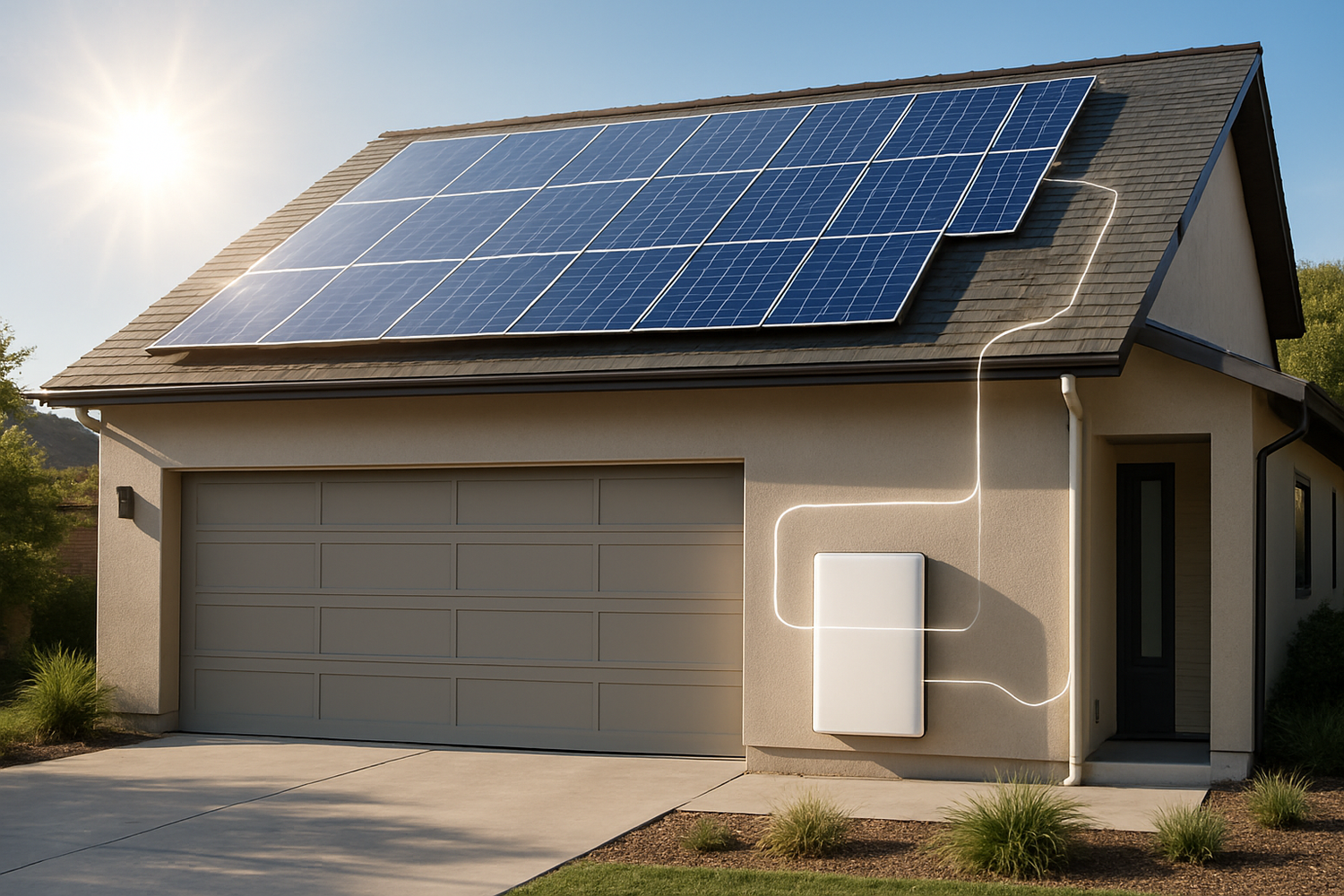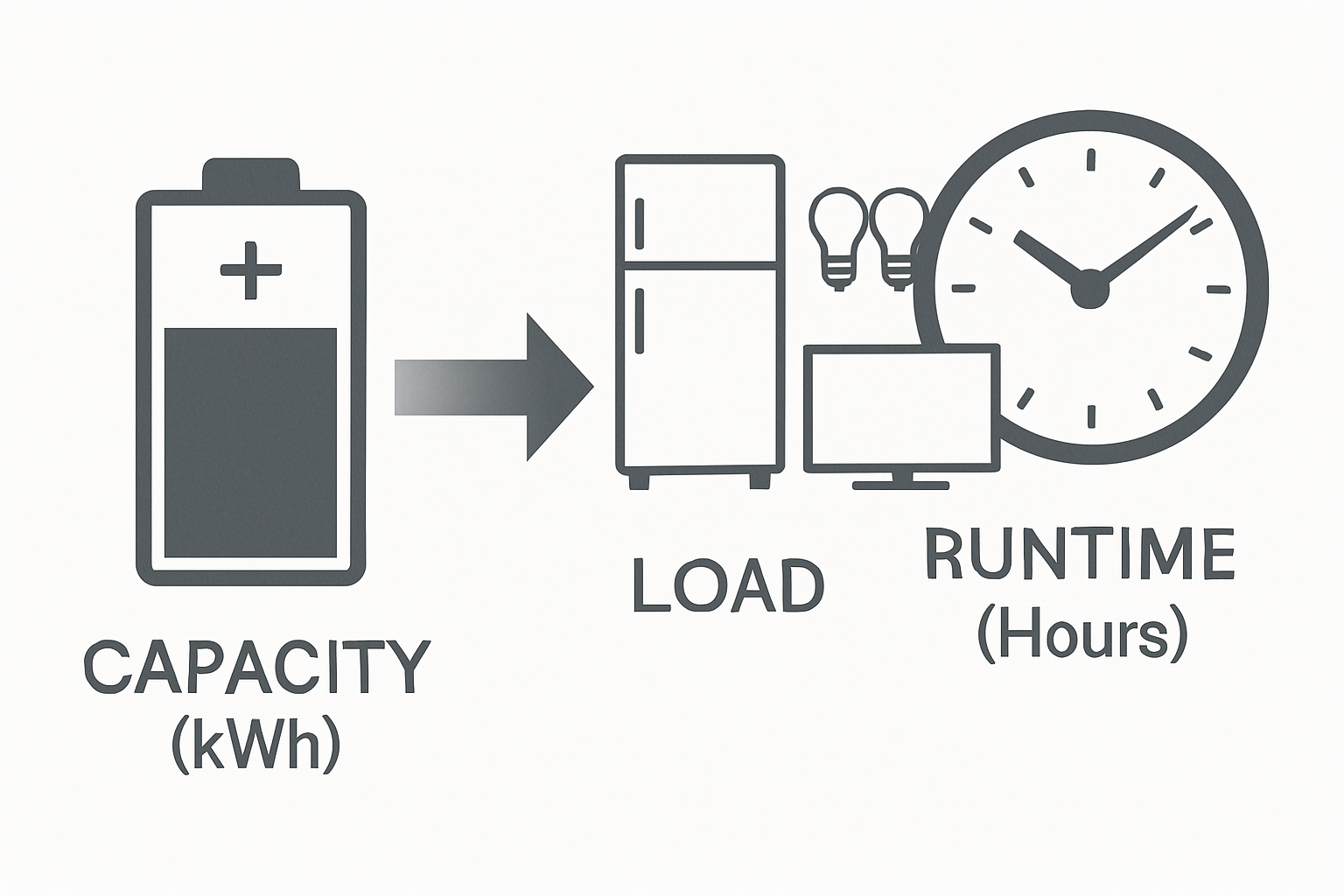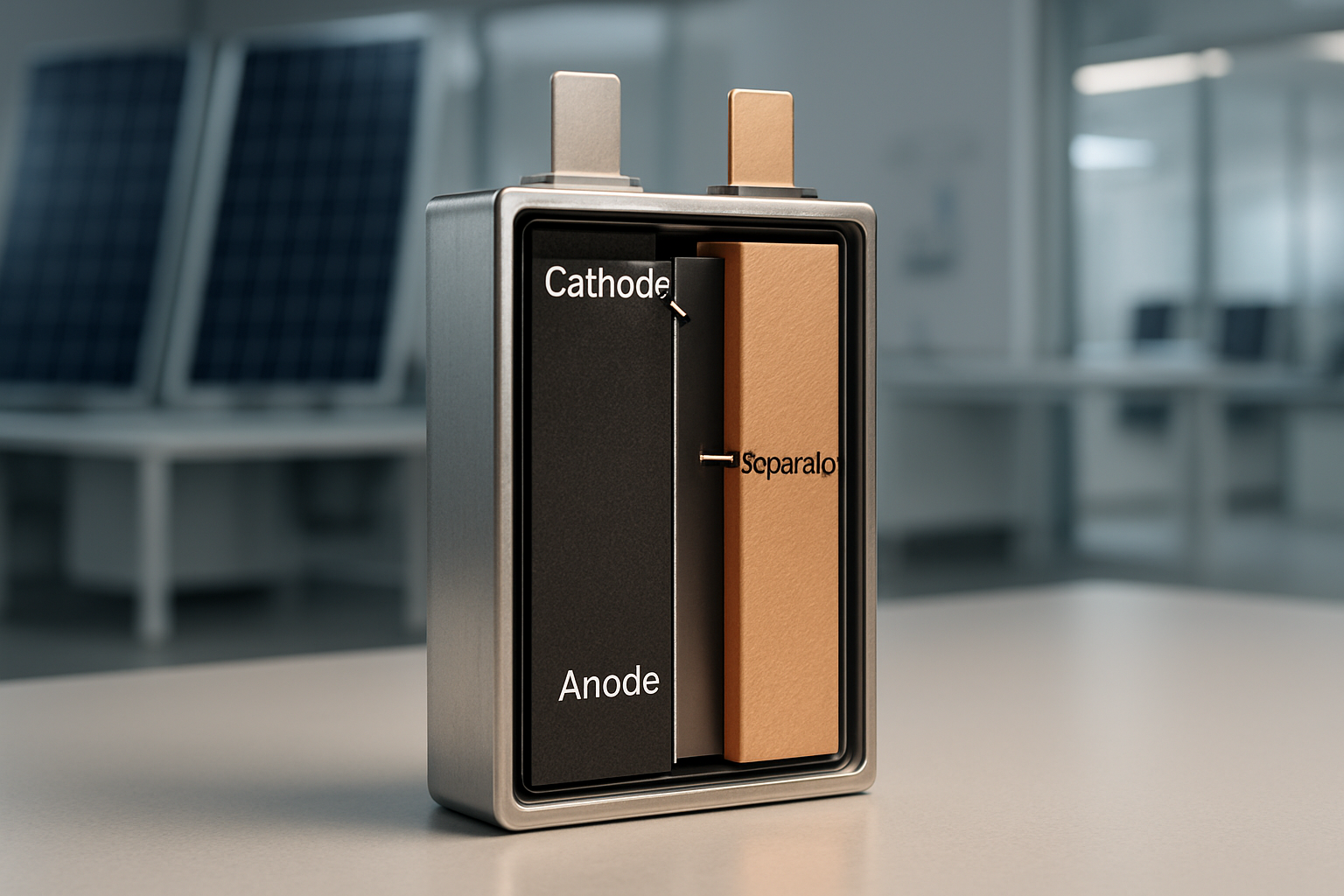The true measure of a home energy storage system isn't just its size; it's the duration it can power your home when you need it most. Understanding the concept of runtime is fundamental to achieving energy independence and peace of mind. This explanation clarifies the relationship between battery capacity and runtime, detailing the factors that determine how long your lights stay on during an outage.
Decoding Battery Capacity and Runtime
To make an informed decision about a residential energy storage solution, you must first grasp two core concepts: capacity and runtime. They are related, but not interchangeable.
What is Battery Capacity? (kWh)
Battery capacity is the total amount of energy a battery can store. It is measured in kilowatt-hours (kWh). Think of it as the size of a fuel tank. A 10 kWh battery can hold 10 kilowatts of energy for one hour. This number represents the total energy potential available for use.
What is Runtime? (Hours)
Runtime is the length of time a battery can supply power to your home's appliances. Following the fuel tank analogy, runtime is how many hours you can drive your car on a full tank. This figure is not fixed; it changes based on how much power you are consuming at any given moment. A battery will have a much shorter runtime if it's powering an air conditioner compared to just a few light bulbs and a refrigerator.
The Critical Distinction for Homeowners
A large capacity does not automatically guarantee a long runtime. A 15 kWh battery might seem superior to a 10 kWh battery, but if your home's energy consumption is high, even the larger battery's runtime could be surprisingly short. The key is to balance capacity with your actual energy needs to ensure you have power for the desired duration.
Key Factors Influencing Your System's Runtime
Several variables affect how long your residential energy storage system will last. Understanding these factors allows for a more accurate estimation of your backup power capabilities.
Appliance Load: The Biggest Variable
The single most significant factor determining runtime is your home's electrical load. This is the combined power consumption of all the appliances and devices you are running simultaneously. High-power appliances like HVAC systems, electric stoves, and water heaters will deplete a battery much faster than low-power items like LED lights, laptops, and refrigerators.
| Appliance | Average Power Consumption (Watts) |
|---|---|
| Central Air Conditioner | 3,500 W |
| Electric Water Heater | 4,500 W |
| Refrigerator | 200 W |
| LED Light Bulb | 10 W |
| Laptop Computer | 50 W |
| Television (50-inch LED) | 100 W |
System Efficiency and Power Conversion
Energy is lost during the conversion process from the battery's direct current (DC) power to the alternating current (AC) power used by your home's appliances. This conversion is handled by an inverter. Modern inverters are highly efficient, typically operating at 90-98% efficiency, but this small loss still impacts the total available energy and, consequently, the runtime. For a deeper look into system performance metrics, a comprehensive reference on solar storage performance can provide additional details.
Depth of Discharge (DoD) and Usable Capacity
Depth of Discharge (DoD) refers to the percentage of a battery's total capacity that has been used. Not all batteries are designed to be fully drained. For instance, older lead-acid batteries often have a recommended DoD of only 50% to preserve their lifespan. In contrast, modern Lithium Iron Phosphate (LiFePO4) batteries feature a much higher DoD, often between 90% and 100%. This means you get to use nearly the entire stored capacity, significantly increasing the effective runtime from a battery of the same size.
Calculating and Maximizing Your Runtime
With an understanding of the key factors, you can estimate and actively manage your system's runtime to meet your needs.
A Practical Formula for Estimating Runtime
You can estimate your system's runtime with a straightforward calculation. This formula provides a solid baseline for planning:
Runtime (in hours) = (Battery Capacity in kWh * DoD * Inverter Efficiency) / Average Appliance Load in kW
For example, consider a 10 kWh LiFePO4 battery with a 95% DoD and a 95% efficient inverter, powering essential loads totaling 1 kW (1,000 Watts):
Runtime = (10 kWh * 0.95 * 0.95) / 1 kW = 9.025 hours
Strategies to Extend Your Backup Power
During a power outage, you can actively extend your runtime:
- Prioritize Critical Loads: Focus on powering only essential appliances such as your refrigerator, medical equipment, a few lights, and communication devices.
- Manage High-Power Devices: Avoid using high-demand appliances like electric ovens, dryers, or central air conditioning unless absolutely necessary.
- Adopt Energy-Efficient Habits: Simply turning off lights in unused rooms can make a noticeable difference over several hours.
The Role of Solar Recharging
Integrating solar panels with your residential energy storage system transforms it from a temporary backup into a long-term power solution. During the day, your solar panels can power your home while simultaneously recharging the battery. This creates a cycle of self-sufficiency that can extend your runtime indefinitely, provided there is adequate sunlight. As noted in a U.S. Department of Energy report, coupling small-scale solar with storage can power critical building loads during grid outages, enhancing community resilience. The International Renewable Energy Agency also points out that hybrid systems combining solar with battery storage are increasingly used to enhance grid flexibility and improve system reliability.
Achieving True Energy Independence
Focusing on runtime rather than just battery capacity empowers you to design a system that truly fits your lifestyle. A well-planned residential energy storage system, particularly one paired with solar, provides not just backup power but also a greater degree of control over your energy future. According to the International Energy Agency, electrochemical storage technologies like those used in homes offer response times in seconds and can discharge for minutes to hours, making them ideal for residential security. By understanding your consumption and the factors that influence performance, you can select a reliable and scalable solution that delivers lasting value.
Disclaimer: This information is for educational purposes only. It is not financial or legal advice. Consult with a qualified professional for personalized recommendations.
Frequently Asked Questions
How long will a 10 kWh battery run my house?
The runtime of a 10 kWh battery depends entirely on your home's energy load. If you are only powering essential items like a refrigerator, some lights, and a router (totaling around 500 watts), it could last for nearly 20 hours. However, if you run a central air conditioner (3,500 watts), the same battery might only last for about 2.5 hours.
Is a bigger battery always the better choice?
Not necessarily. An oversized battery can lead to unnecessary upfront costs and potential inefficiencies if the stored energy is consistently unused. The ideal system is sized to match your specific needs, considering your average daily energy consumption, the critical loads you want to back up, and the duration you need them for.
What is the advantage of a LiFePO4 battery for runtime?
LiFePO4 batteries provide superior runtime for their size because they have a very high Depth of Discharge (DoD), often 90-100%. This allows you to safely use more of the battery's total stored energy compared to other battery chemistries. They also offer a much longer lifespan and greater safety, making them a reliable choice for home energy storage.
Can I add more batteries later to increase my runtime?
Yes, many modern residential energy storage systems are designed to be modular and scalable. This flexibility allows you to start with a system that meets your current needs and budget, and then expand it by adding more battery units in the future to increase both your storage capacity and runtime.





Leave a comment
All comments are moderated before being published.
This site is protected by hCaptcha and the hCaptcha Privacy Policy and Terms of Service apply.